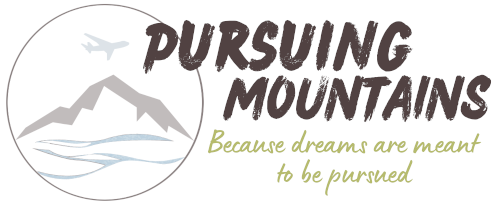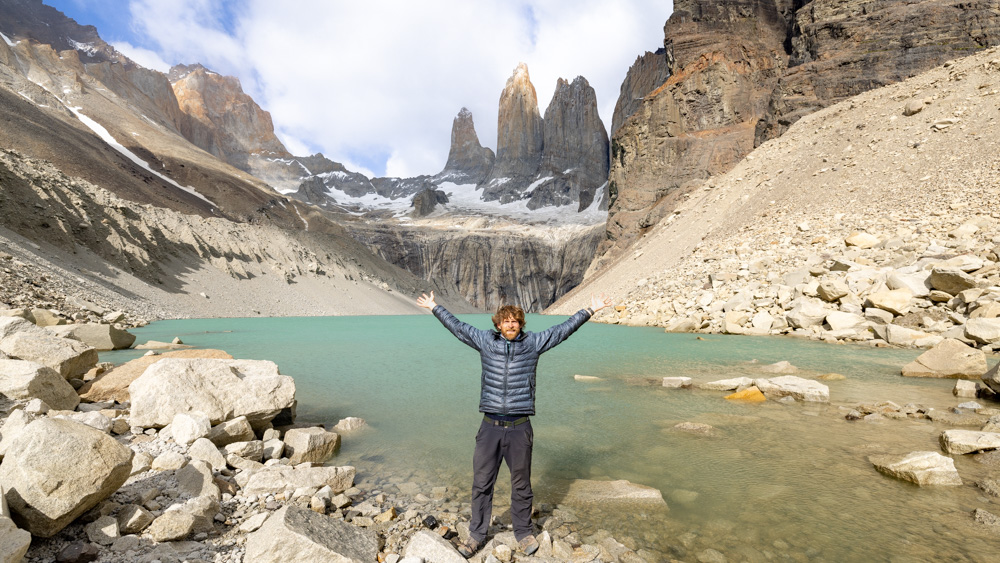
We completed the O Trek in Patagonia in December 2022 and were surprised by the lack of up-to-date information on this popular trek in Torres del Paine National Park in Chile. There was a lot we weren’t able to research before starting the trek. Here are 6 things we wish we had known before starting the O trek.
1. Be prepared to spend some money
This is not a budget friendly trek. We have done treks around the world and the O trek was by far the most expensive. At the time, we were on a long-term trip in Latin America with a limited budget so the prices came as a bit of a shock when we started booking this excursion. Wild camping is prohibited and the campsites are expensive and limited. Be sure to book well in advance in order to get the lowest cost option. Additionally, you will need to pay the park entrance fee ($50 per person), transportation to the park ($25 per person) as well as a second shuttle to get into the park ($4 per person). The town Puerto Natales where most people start and end their trek is also quite expensive in terms of food and lodging. Additionally, gear rentals in town are the most expensive we have ever seen anywhere we’ve traveled. That being said, for all trekking related expenses including rental gear we spent a total of around $1,150 for two people for the 8 day O trek, excluding flights, hotels, and food pre and post trek. You can spend A LOT more by staying in the lodges and paying for all or most of your meals on the trek (a typical breakfast is around $19 per person). You can also spend less by booking campsites in advanced, and bringing your own gear. We would have saved hundreds alone by doing that.

2. You can rent good gear in town
We were on a 5 month trip through Latin America using carryon bags only so we did not have our nice backpacking equipment with us. On previous adventures abroad we have had terrible experiences renting gear that was too heavy and poor quality, so we decided to pay extra to have a tent ready for us at each campsite. This way, we wouldn’t have to carry a absurdly heavy tent and if it malfunctioned, we wouldn’t be stuck with it for 7 nights. However, if I had known then, what I know now, I would have just rented a light weight tent in the nearby town of Puerto Natales. You can find really nice light-weight tents that are in good condition, but the price is still fairly high, in fact, all of the rental gear in Puerto Natales seems to be. It was around $13/day for a two person tent so at 8 days you’re looking at about $104 just for the tent, but this is still cheaper than the $30-45 it cost us to have a tent setup onsite at each campsite. Also, there were other places in town that had tents for around 8 USD but we did not look at them to know if they were good quality and light weight. However, if possible, we recommend that you bring the gear you own and trust.

3. You can buy food at the campsites
We were shocked to learn that so much food could be purchased at the campgrounds. We brought 7 days of food with us that we had to carry for the whole trek. If I had known you could purchase so much food, I would have brought much less! When we researched the trek we saw that you could purchase meals at the lodges ($19 for breakfasts and $32 for lunches and dinners), but we had no idea that you could often buy snacks and other food at most of the campsites (see pictures below). Many of the other trekkers we spoke to didn’t know this either. You can often buy instant noodles, beans, and sometimes even eggs for only a small amount more than in Puerto Natales. Even on our tight budget, I would have gladly spent it! That being said, I wouldn’t recommend relying completely on the food at the campsites, especially if you have dietary restrictions. If I were to do it again, I wouldn’t have brought so much food with me.




4. Add a day trip to Mirador Torres del Paine
Even though it’s such a popular trek, it’s hard to find good, reliable information online about it. Many of the other trekkers we talked to were just as confused as we were. Part of this confusion is due to the fact that you have to book the trip through 2 different companies (Las Torres and Vertice). Here’s something we didn’t know before we booked our trek, the famous Mirador Torres del Paine as shown in the picture below is NOT on the O-Trek, so if you want to see this amazing site (and I suggest you do), make sure you give yourself an extra day at the beginning or end of your trip.

5. You can find garbage and sometimes recycling at most campsites
We tried to research whether the campsites had garbage before we left, but couldn’t find any information, so we came prepared to pack out all our trash with loads of ziplock bags for garbage, however, almost every campsite has garbage and some even recycling. From what I remember, the campsite Los Perros is the only one that doesn’t have garbage services, so you have to pack out everything from here, but then you can dump it the next day at campsite Grey.

6. You won’t find solitude, but that’s okay!
When you book your trek, you are locked into a pretty rigid itinerary. You follow the same path and go to the same campsites as everyone else starting on the same day. This means that you will see the same people each night and often throughout the trek. At first we were put off by this, as we are used to going backpacking on our own and enjoy the solitude that backpacking provides. You won’t get that on this trip, but that is okay. It’s a different kind of trip! You will meet people from all around the world and share meals in the cooking area. You also form a camaraderie which is very nice as you’re all working towards the same goal. This actually ended up being an unexpected highlight of our O trek.

We have a three part YouTube series documenting the complete trek including touring some of the facilities:
If you have any questions leave a comment below!
Thanks and Safe Treks and Travels!
Liz

